Dell PowerEdge C6145: Performance In The Clouds
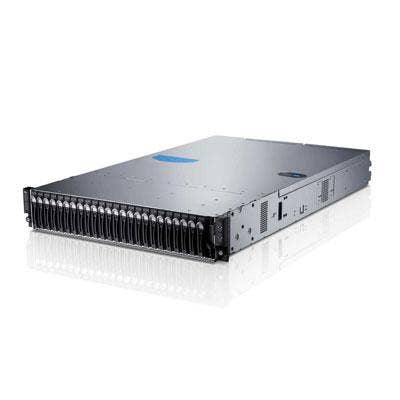
Dell PowerEdge C6145: Looks Can Be Deceiving
Dell's latest PowerEdge server may not look like much, but the Dell PowerEdge C6145, which began shipping on Mar. 1, gives new meaning to high-density computing. Inside this 2U chassis is the capacity for 96 AMD Opteron processor cores, 1 TB of 1333-MHz DDR3 memory, 24 hot-swappable 2.5-inch (or 12 3.5-inch) SATA, SAS or solid state drives, six half-length PCIe x16 expansion cards and a pair of x16 mezzanine slots. These are divided evenly across two fully self-contained and redundant server nodes, each of which slides out for upgrades and service.
After performance-testing the C6145, the CRN Test Center want to describe it as our 2010 Server of the Year squared. Its capacities greatly surpass last year's model, and just one of the C6145's two server nodes nearly doubled the Geekbench score of the reigning champ, the Dell R810.
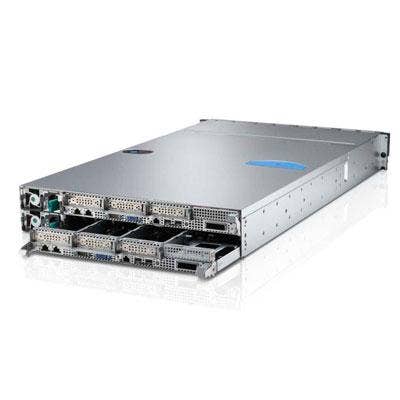
Two Servers In One
The C6145 is actually two, 4-socket servers in one, with each sled sliding out rearward for upgrades and maintenance. A top cover slides backward slightly and lifts out to reveal processors, fans, memory and its three half-length PCIe x16 expansion slots (shown here and in a later slide).
For tests, we configured each node as a stand-alone server running 64-bit Windows Server 2008 R2. Each server was populated with four AMD 6132HE 12-core processors, and each with its own 128 GB of memory. However, Windows addressed only it maximum of 32 GB. The peak score of 22,607 was observed when running the 64-bit version of Geekbench on node 2. Node 1's high water mark was 21,257. The PowerEdge C6145 is aimed squarely at HPC applications, virtualization, VDI and EDA workloads. We'd say it's well qualified.
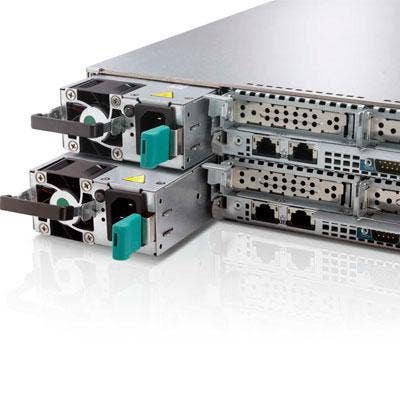
Shared, Redundant Power And Fans
The C6145's rear panel is where the action is. All rear-facing components are hot-swappable, including the twin 1023W power supplies and its upper and lower server nodes, each of which slides out in its 1U sled for service. At right notice each motherboard's built-in dual Gigabit Ethernet and console port. Not shown are dual USB 2.0 and VGA ports, as well as a third RJ-45 connector for out-of-band management. Also shared among the server nodes (and not shown) are a bank of fans, which Dell obviously did not select for their quietness. The noise from these fans is sure to stand out in your server room.
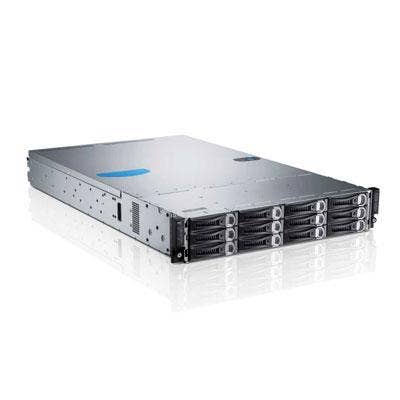
Cheaper By The Dozen
For the PowerEdge C6145, Dell offers backplanes for accepting as many as a dozen 3.5-inch drives (shown) or two dozen 2.5-inch SAS, SATA or solid state drives. All drives are hot-swappable; SAS drives require an optional add-on card. The tested system included an LSI SAS2 2008 RAID controller, which helped the C6145 deliver a peak transaction rate of 21,805 IOps with four 500 GB SATA (7200 RPM) drives configured as a RAID 0 array.
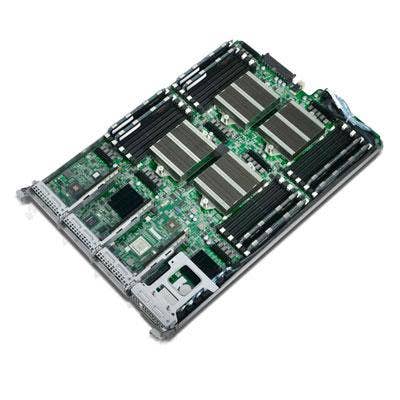
Massively Expandable
On one of the C6145's two identical motherboards we see its four-processor heat sinks surrounded by its 32 RDIMM/UDIMM slots, each of which can handle up to 16 GB, for a grand total of 512 GB per server. Along the left side are the slot risers for low-profile PCIe expansion cards. The cramped quarters allows for two x16 cards of 6.667 inches in length, and a third at 4.795 inches, according to Dell's documentation.
Still, we would have preferred to see more than just two built-in networking interfaces per server, particularly for a machine that's intended for virtualization. The CRN Test Center recommends the Dell PowerEdge C6145 for any installation in need of a high-density, high-performance server with plenty of redundancy features. The C6145 as tested here carries a list price of $19,502. For more information about CRN's experience with the PowerEdge, please read the full review.